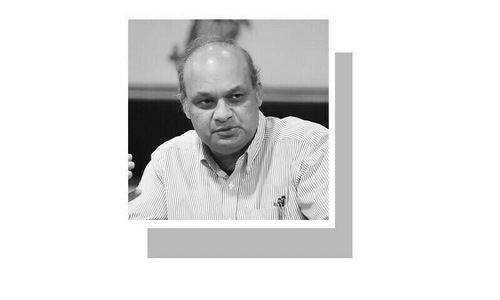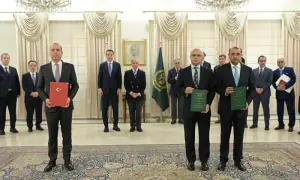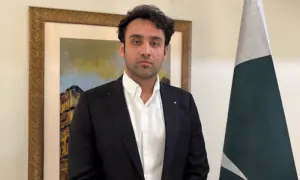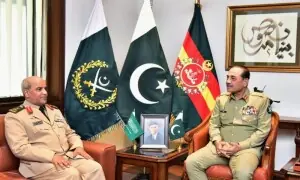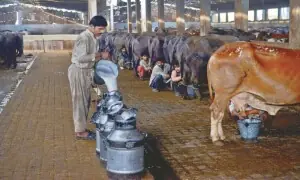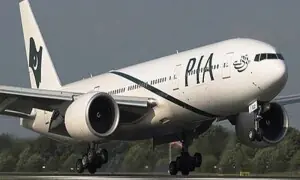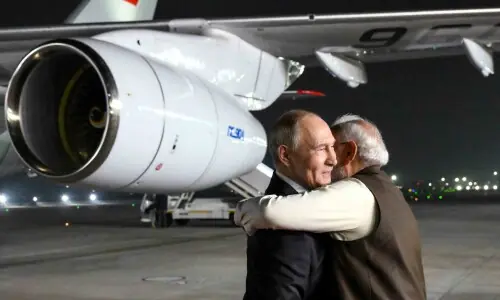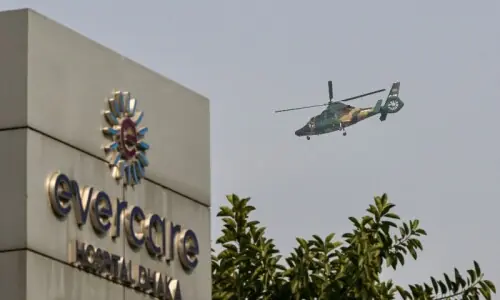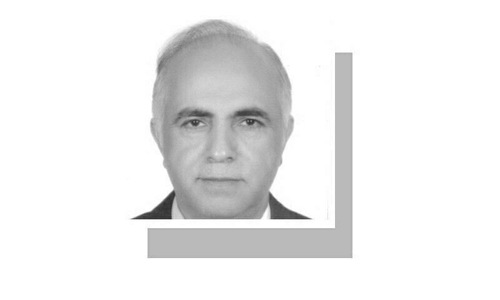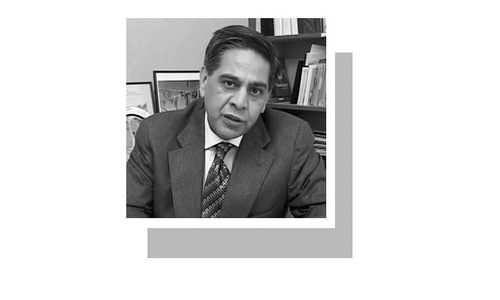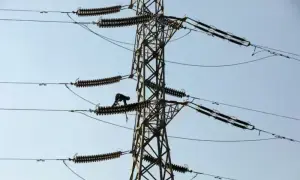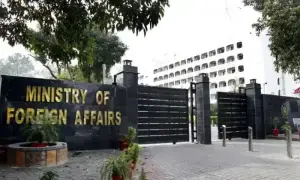PAKISTAN’S economy is currently afflicted by two problems requiring diametrically opposite remedies: economic stagnation, which dictates expansionary policies, and inflation caused by a fiscal gap, which requires contractionary policies. Pakistan thus suffers from stagflation.
Given their conflicting remedies, should Pakistan prioritise economic growth (real stability) or inflation control (financial stability)? Neoliberal economists always prioritise financial stability, arguing that it automatically ensures real growth.
The IMF and the US (which suffers a larger deficit and debt burden but does not fully practise the flawed neoliberalism that it preaches) are asking Pakistan to raise sales taxes and eliminate subsidies. This strategy will certainly reduce the fiscal gap. However, it may not reduce inflation since sales taxes and withdrawal of subsidies on utilities, petrol and food can be inflationary.
Developmental economists, like Joseph Stiglitz, question neoliberal prescriptions. They argue that developing countries’ policies should foster higher standards of living through equitable and environmentally friendly economic growth by accumulating advanced human and technological resources. The Asian Tigers have shown how to do so. Governments must spend adequately on developing human, technological and infrastructural resources. Also crucial is access to capital, technology and inputs from abroad, through close links with advanced countries.
These two requirements can, however, cause short-term instabilities if mishandled. If governments spend more than they earn, they can cause high/hyper inflation by borrowing from central banks to close the fiscal gap. If countries do not earn enough foreign exchange to pay for external inputs, this external gap can eventually cause their currency to depreciate.
There is strong evidence that high inflation and depreciation, the main manifestations of financial instability, undermine real growth. However, there is little evidence that moderate inflation does so, though it pinches poor people hard. Consequently, many developmental economists prioritise financial instability when it is high, but real variables when financial instability is moderate (while ensuring that it does not increase further).
Pakistan’s fundamental problem is its failure to accumulate human and technological capacities. Thus, the majority, unskilled and working in technologically backward sectors, earns a low income. This also reduces the government’s ability to earn adequate revenues and foreign exchange, keeping fiscal and external balances perpetually under pressure. External and internal shocks (like oil shocks or insecurity) convert these pressures into periodic financial instability, as currently.
How bad is the current situation? The economy is described as ‘devastated’, ‘ruined’, ‘ravaged’ and ‘in crisis’. Most of these terms have little economic meaning and represent political rhetoric. However, ‘economic crisis’ is an operational concept and describes an economy contracting significantly and/or facing a precipitously depreciating currency or high/hyper inflation. Which of these afflict Pakistan?
Due to poor governance, global recession, national insecurity and floods over the last three years, Pakistan’s yearly growth rate has come down from a long-term average of five per cent to around two per cent but is not negative. The rupee is steady and exchange reserves historically high. Inflation is between 15 per cent to 20 per cent, which is considered moderate. Thus, none of the criteria reflect an economy in crisis. However, the first and third clearly reflect a poor situation.
Given that financial instability is still moderate, developmental economists would prioritise the economic stagnation problem, while ensuring that inflation does not increase further or even reduces. The latter is important as continued State Bank borrowings by the government could soon lead to escalating inflation levels from moderate to high and cause an economic crisis.
These twin objectives can only be achieved by not increasing taxes or reducing subsidies that affect the common people, for doing so would add to their misery and reduce their private consumption, which in turn would slow overall economic growth.
Efforts to reduce the fiscal gap and inflation should instead focus on pin-pointedly eliminating subsidies benefiting the rich and increasing taxes on them (as this will more likely reduce their savings rather than consumption, and therefore will not slow overall economic growth), e.g., taxes on landlords, large properties, capital gains, large transport and retail businesses and sales taxes pinpointed at opulent consumption.
Such efforts should target government wastage, e.g. tax leakages, public-enterprise losses (not only through the divestment suggested by the IMF but also management improvements), corruption, defence expenses’ rationalisation and excessive privileges for parliamentarians. Such efforts should focus on negotiating the postponement of immediate repayments on official foreign loans perhaps even cancellation.
This negotiation will become easier once the government shows credible steps on the earlier options. Fears exist that debt restructuring could cause a loss of international confidence. However, this occurs under unilateral repudiation and not with negotiated restructuring, as evidenced by our own restructuring case after 9/11.
These strategies will require considerable political will and collaboration. Mirroring its fairly successful constitutional reforms committee, the government should initiate an economic reforms committee with representation from all parties to urgently resolve fiscal problems. Some of its suggestions, such as those listed above, could then become part of the constitution, as in the successful case of Latin American countries. This will enhance long-term policy consistency and domestic and international confidence.
To enhance incomes broadly and reduce financial instability permanently, a long-term strategy is also needed to help surpass our average growth rate through the accumulation of advanced human and technological resources. This can be achieved through a bottom-up (not trickle-down) approach that provides the poor with increasing opportunities through urban and rural land reform, credit schemes, education, training and input provision.
The fiscal options above can provide the needed funds. The increasing prosperity of the majority will provide markets for the expansion of domestic investment and increase tax revenues. Identifying linkages with the Chinese and Indian economy, as the centre of the global economy moves to our neighbourhood, could complement this domestic-focused approach to help maintain the external balance. Clearly, a developmental approach can help Pakistan escape the horns of an economic dilemma created by decades of neoliberal policies and poor governance.
The writer is a research associate in political economy issues at the University of California, Berkeley.


